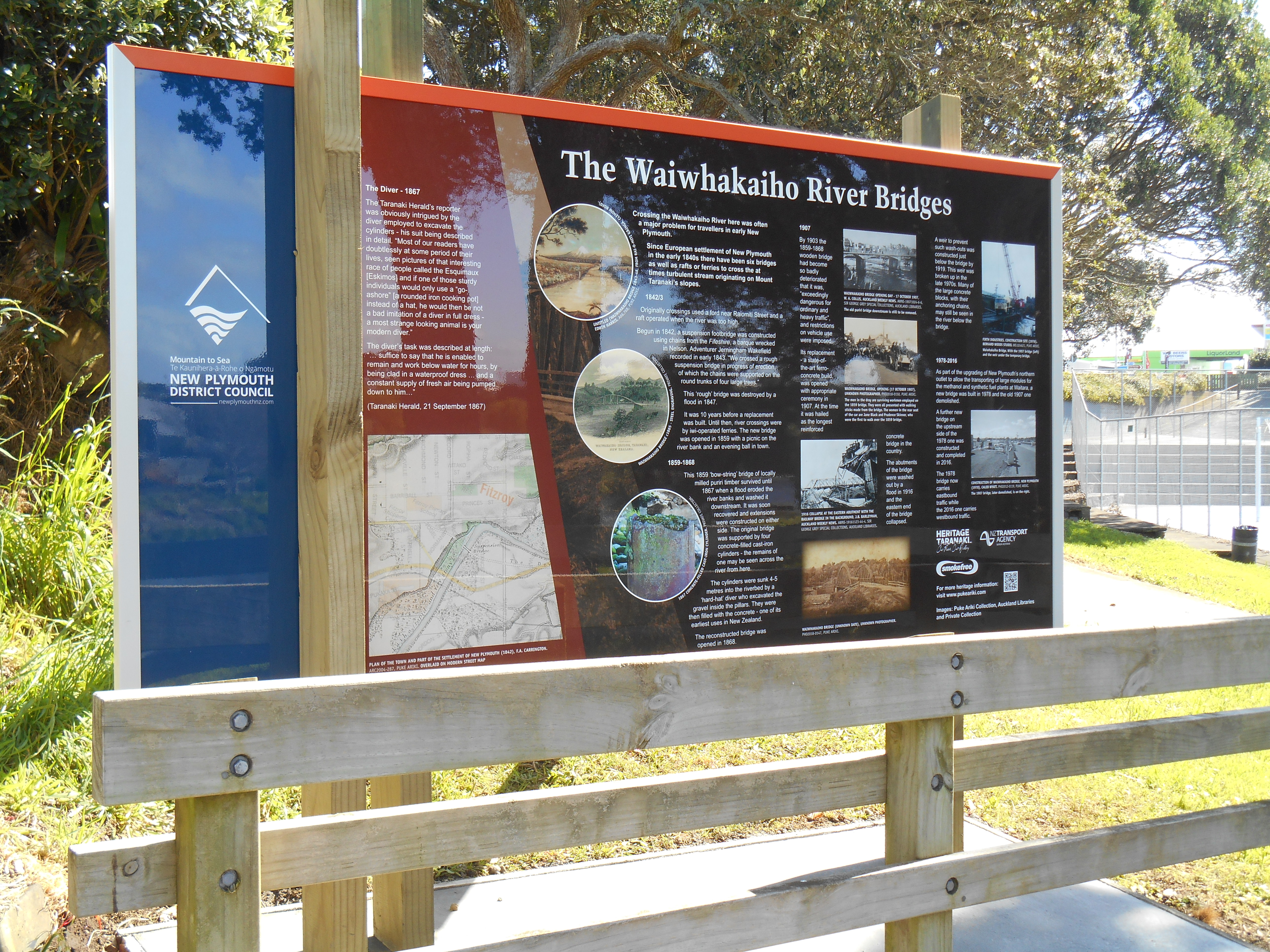





Crossing the Waiwhakaiho River was a major problem for travellers in early New Plymouth.
The only usable ford over the river was at the end of what is now Raiomiti Street - the access to the netball courts at Waiwhakaiho - and a ferry in the form of a raft operated when the ford was unusable.
The construction of a bridge was begun in 1842 by Messrs. Brown & Goodall, using chains from the barque, Fifeshire, which was wrecked at Nelson.
Adventurer Jerningham Wakefield recorded in early 1843 - “We crossed a rough suspension bridge in progress of erection, of which the chains were supported on the round trunks of four large trees.” (Wakefield 1845, Vol II, p350)
The resulting suspension bridge was, almost certainly, restricted to foot and light traffic - and possibly for single horses - although horses were unlikely to accept the movement of the structure without concern! A near-collapse in 1843 was apparently narrowly averted "while a herd of cattle was passing over."
The wooden piers were made of pukatea timber which quickly decayed and the bridge lasted only until 1847 before it collapsed in a flood.(Seffern 1896, p145)
It was to be 10 years before a replacement was built, but during this decade at least two ferries operated to cross the river. The second, the Waiwakaiho Ferry was established in 1855. The first ferryman was Wiremu te Ahoaho (also known as Samuel Puketapu) followed later by Hoani te Ata. Notwithstanding the ferries, the lack of a bridge saw a number of lives lost in trying to ford the river.
Reference: Author unknown, A Brief History of the Waiwakaiho Bridge, Typescript, Puke Ariki Collection.
Please do not reproduce these images without permission from Puke Ariki.
Contact us for more information or you can order images online here.